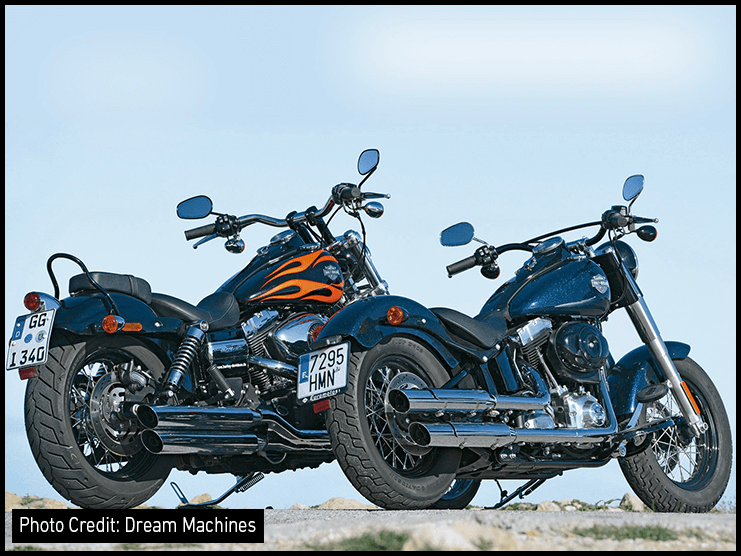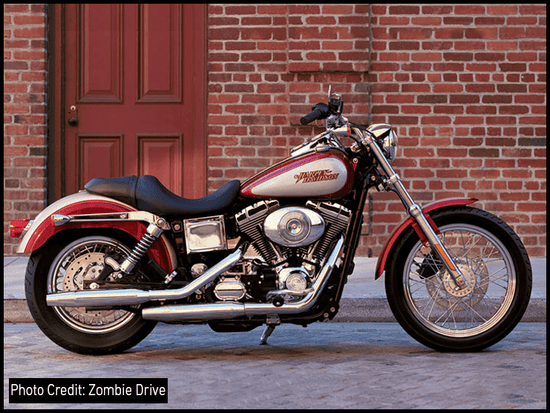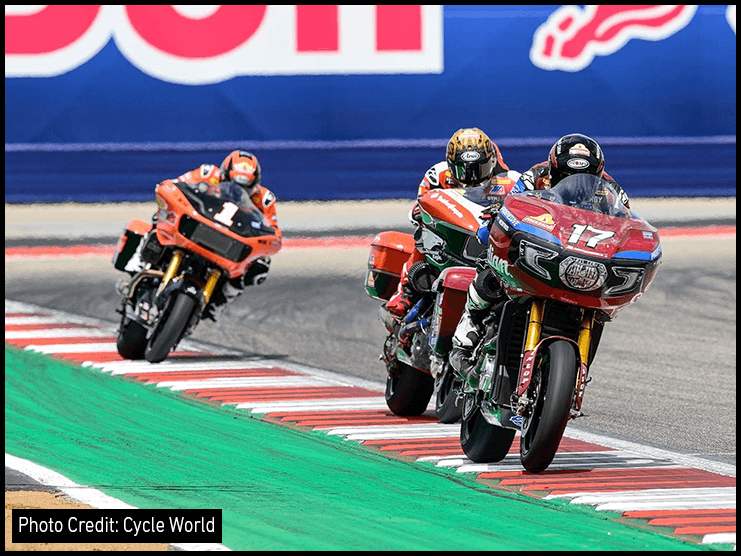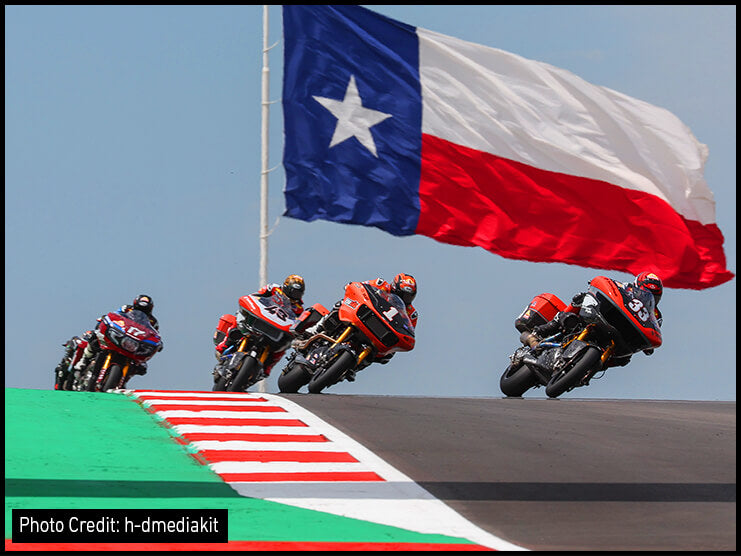Table of Content
The Harley-Davidson Dyna, the name that lived for decades, not only left a permanent mark in the cruiser world but also made history. Its historical importance is marked by a rough, rebellious, and unique riding character. However, why did Harley-Davidson finally choose to say goodbye to this historical Dyna series and switch to the Softail lineup?
The Harley Dyna was a relatively new series in Harley’s motorbike lineup when it quickly gained popularity among a niche group of riders. Continue reading this article to learn about the Harley-Davidson Dyna’s impact on the motorcycle industry and the factors that contributed to its downfall due to which the Softail lineup replaced it.
1. Dyna’s Origins and Popularity
1.1 The Beginning of the Modern-Classic Harley Davidson Era

The H-D Dyna first appeared in 1991, representing a crucial period for Harley-Davidson. Harley Dyna was a perfect blend of traditional and modern values incorporated in a motorcycle, combining iconic Harley appearance with cutting-edge technology. Distinct from the hefty cruisers of the past which focused on a stable ride, Dyna was designed to provide the rider with a more robust riding experience. Its sleek, low-profile frame, high handlebars, and shiny chrome were all embedded in the classic cruiser designs that also added remarkable flexibility and maneuverability characteristics.
1.2 Notable Dyna Models
The Dyna lineup had several models which were quite prominent. The Harley Dyna Super Glide with its clean-cut design, open-view engine, and decently-positioned foot controls represented the spirit of freedom and strength. The Harley Dyna Street Bob, in its raw form, became the platform for customization with many motorcyclists using it to express their individuality. Another masterpiece in the Dyna family, the Harley Dyna Low Rider, with its lowered seat height and sportier riding position, was able to attract the type of people who wanted to stand out from the crowd on the open road.
1.3 Harley-Davidson Dyna’s Performance
The main feature of the Harley-Davidson Dyna series was the engines used to power these bikes. A generous amount of torque and a feeling of power were the characteristics of these power plants that made them the fan favorite. Going leisurely on country roads or traveling through the city streets, the Dyna’s torque curve assured quick acceleration.
1.4 Harley-Davidson Dyna’s Style

The Harley-Davidson Dyna was not just about performance, but also about styling. Its design showed how strong the bike is from chunky front forks to wide rear fenders. The blacked-out components, drag-style handlebars, and exposed mechanical parts made the bike look more rugged and unique.
1.5 Harley-Davidson Dyna’s Character
The Harley Dyna series includes models that appeal to both the experienced riders and the young fans of the Harley brand alike. For younger riders, who are usually attracted to the rebellious spirit, associated with Harley-Davidson, the Dyna is irresistible.
1.6 Harley-Davidson Dyna’s Discontinuation
The H-D Dyna brand left an indelible impression on the motorcycle industry after its retirement in 2017. The retirement of this icon motorcycle series was met with both sadness and enthusiasm, as the vast majority of its die-hard fans mourned its departure, while the remaining half rejoiced the introduction of the Softail series. Despite the discontinuation, the Harley Dyna’s legacy continues to grow, proving that bikes are not just machines; they are a medium through which passion can be felt and excitement can be experienced.
1.7 Harley-Davidson Dyna’s Distinctive Features
A pair of exposed twin shocks was one of the Harley-Davidson Dyna’s signature components. Compared to the concealed suspensions of the Softail, the Dyna’s exposed suspension setup stood out to ensure a dynamic ride with the old-school Harley look.
The Dyna’s frame was stiffer than the one offered on old Softails, which made the handling and cornering better. An H-D Dyna could handle the twisty roads with the utmost certainty.
Customization possibilities in the Harley Dyna models were paramount. Dyna owners could strip down their bikes, swap out parts, and assemble machines that are their design, which emphasizes their individuality. Whether it’s Sissy Bars , Handlebars , Fairings , and Backrests , visit the Viking Bags ’ online store to transform your Dyna and get the best out of it in terms of superior comfort on long-haul tours.
2. Reasons Why Harley-Davidson Killed Dyna?
2.1 Low Sales
The Dyna series was not as lucky in terms of sales as it continuously declined, although it has a great reputation and a devoted fan following. Harley-Davidson experienced the worst bike sales over the past five years in 2017. In the second quarter of 2017, sales in the United States declined by 9% while over the first 6 months, they dropped by 8%.
Historically, the middle-aged rider market segment was the main consumer of the brand's motorcycles. However, this demographic was no longer buying bikes at the same rate as before. The Harley-Davidson sales figures indicated the shrinkage and the company had no other option but to discontinue the Dyna.
2.2 Need for a Change
The motorcycle world has always been evolving since the very first day and there is no room for stagnation in this industry. Motorcycle brands should constantly reinvent themselves to ensure they meet the demands of ever-changing trends, prevailing rider expectations, and growing technological advancements. The Harley Dyna lineup, which was very popular among Harley fans, has somehow become a little predictable with its classic looks and steady performance. To be up-to-date and to attract not only its existing but also a broader target group, Harley-Davidson understood the importance of innovations. Terminating the Dyna series was one of the multiple steps to bring freshness into the available Harley product range.
2.3 Incapability to Accommodate Milwaukee-Eight Engine
The creation of the Milwaukee-Eight engine was an important event in the history of Harley-Davidson. The installation of this new power plant was an upgrade that made the motorcycle go faster, run cooler, and last longer. The melding of the Milwaukee-Eight into the Dyna frame encountered engineering issues. Being a rigid bike with design limitations, it was hard for the Dyna to fit in a larger and more powerful Milwaukee-Eight engine while still maintaining the rest of the bike’s features. Instead of cutting on performance or updating the Dyna shape, Harley-Davidson decided to discontinue the line.
2.4 Engine Vibrations Problem
The V-Twin engines of Dyna were famous for the noise they emitted, which reminded us of the classic Harley-Davidson rumble. On one side, this is what made the Dyna outstanding, yet, on the other, it was the main obstacle for the lineup. As time went by, motorcycle enthusiasts began to realize the excess of engine vibrations, a feature that some appreciated because of its authenticity, but it made most riders feel uncomfortable after long rides. Harley-Davidson wanted to keep the traditional and iconic look of the Dyna but was looking for a solution to the vibration problem. The decision to quit the Dyna series led the company to look for more effective solutions to maintain high standards of riding experience.
2.5 Demographics
The motorcycle market is volatile, affected by changing market demographics and a shift in preference. The traditional image of an average Harley-Davidson rider who is a 50+ years old person who wants to find freedom and happiness in the wilderness was not the main objective of the company anymore. Entering the market, there were not only younger riders but their requirements also differed from their predecessors. They were looking for bikes that would connect the past with the present, and have lightness, maneuverability, and versatility. The Dyna series, while still embraced by the loyalists, didn’t seem to make sense to the modern client base. Harley-Davidson felt the necessity to innovate and satisfy a broader range of customers.
2.6 Product Strategy
Harley-Davidson embarked on a bold product campaign to rejuvenate the brand. The company embarked on its aggressive product development program to plan and launch almost a hundred new models in 10 years. The Dyna series has its place in the history of Harley-Davidson but it served only one specific segment of the riders. To make place for the Softail models and promote them on a better level, the Harley-Davidson Dyna was retired.
3. The Softail Solution
In this segment, we will look at how the Harley-Davidson Softail lineup overcame the challenges faced by the Dyna series, which was discontinued in 2017.
3.1 Frame Design and Comfort

The Softail models were the first ones to bring a new approach to frame design. Softails covered up the rear suspension system to have a more comfortable ride without losing appearance. Riders now have the opportunity to ride on a Harley with the classic look that only generates fewer vibrations.
If you want to double the fun and capabilities of your Harley Softail, Viking Bags make specially-designed Saddlebags , Sissy Bars , Sissy Bar Pads , Handlebars , Fairings , and Crash Bars .
3.2 Handling and Stability
The Harley-Davidson Softail models are popular in terms of striking a perfect balance. The slightly higher weight helped to ensure that they offered a higher level of stability, making them very suitable for long-distance highway riding. The relaxed geometry and build encouraged riders to ride hundreds of miles without fatigue. The Softail became the favorite model of riders who strived to have both great performance capabilities and the ability to tour.
3.3 Modern Features and Technology
By introducing innovations in design, the engines installed in the Softail series are packed with high-tech features. The Softail engines became widely known for their better fuel economy and lower emissions. To improve riders’ safety, a modern rider aid package was provided to ensure riders don’t miss out on having fun while being safe.
3.4 Market Position and Versatility
Harley-Davidson Softails expanded its reach. It expanded the targeted audience by providing multiple options with different features. It did not matter if riders wanted a cruiser for daily riding within the city, weekend rides, or long-mile journeys, Softails had a bike to match their requirements. The Softails turned out to be just as versatile as other bikes, attracting riders from all walks of life.
4. Marketing Strategy to Promote H-D Softail
4.1 Global Reach and Dealership Network
Harley-Davidson started to expand in the international markets by opening dealerships in different countries. This strategic move had the effect of providing Harley access to international markets and an opportunity to reach riders globally. The wide dealership network made it easy for customers to access Harley-Davidson motorcycles and services near them, something that boosted the brand presence and accessibility.
4.2 Brand Loyalty and Community Building
The Harley-Davidson brand loyalty has been the cornerstone of the company’s success. The brand has spent decades building a powerful brand identity that connects with a particular type of customer, ones who completely stand by the idea of freedom, adventure, and rebellion. Through the establishment of a community among Harley riders, the company has built up an enthusiastic customer base that is in tune with the Harley-Davidson spirit. The company has based its marketing strategy on the principle of creating a community.
5. Frequently Asked Questions (FAQs)
5.1 Is a Softail Better than a Dyna?
It comes down to the customers’ preferences when choosing between the Harley-Davidson Softail and the H-D Dyna. The Softail provides a smooth ride, timeless appearance, and more customization options, while the Dyna was known for raw power, a traditional look, and excellent handling. However, it is up to you whether you value comfort, classic appeal, power, or a combination of all.
Dyna was discontinued for a reason and undoubtedly, the H-D Softail lineup was an improved and updated version. Softails have better technology and better parts, and they perform substantially better than Dynas in different ways. If you want a more classic, vintage-style bike with base-level motorcycle parts, you can go for the H-D Dyna that is easily available in the used motorcycle market. However, if you want a perfect blend of both classic vibe and modern performance, the Harley Davidson Softail is a way better option between the two.
5.2 Why Are Harleys Called Softail?
The other name for Harley-Davidson motorcycles, “Softails,” was derived from their rear suspension design which is unique in the motorcycle industry. The term “Softail” has gained a reputation as being a cruiser motorcycle that hides its rear suspensions for the sake of nostalgic style reasons.
6. The Bottom Line
Harley-Davidson’s decision to end the Harley Dyna lineup and concentrate on the H-D Softail series was based on certain strategic considerations. The changing demographics of motorcycle riders, the requirement for product line consolidation, and sales difficulties were all factors at play, demanding several steps to be taken for survival.
On the one hand, the Dyna offered raw power and unparalleled agility, and on the other hand, the Softail provided comfort, classic looks, and more customizability. Finally, the decision on whether to get the Dyna or a Softail relies solely on the rider's taste and riding style.







Leave a comment
All comments are moderated before being published.
This site is protected by reCAPTCHA and the Google Privacy Policy and Terms of Service apply.